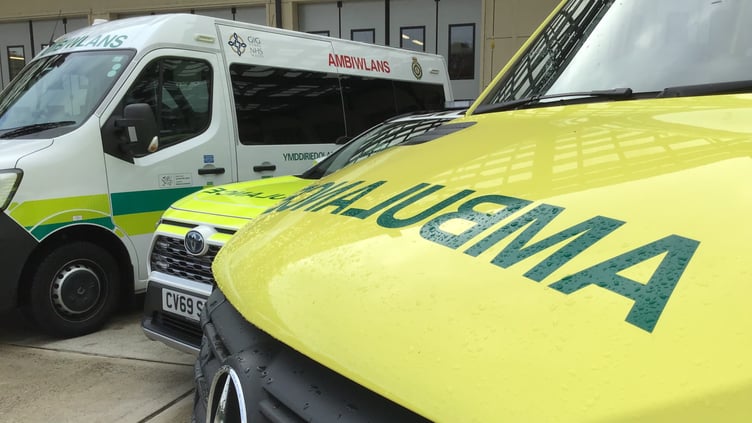Modern ambulances will be responding to emergency 999 calls across Wales, thanks to £22.45m investment by the Welsh Government.
More than 140 new ambulances and vehicles will be part of the first phase of a five-year Welsh Ambulance Services fleet strategy, which will see older vehicles replaced with new ambulances and vehicles fitted with the latest technology, materials, and products.
The wider strategy, which runs to 2030, includes prioritising electric and hybrid vehicles, where viable, to reduce carbon emissions and covers all vehicles operated by the Welsh Ambulance Service.
This includes the Non-emergency Patient Transport Service, which helps people attend hospital appointments and transfers patients between hospitals.
Health Secretary, Jeremy Miles said: "This investment shows our commitment to ensuring the Welsh Ambulance Service has the modern, reliable fleet it needs to deliver exceptional care for people across Wales.
"The ambulance service plays a critical role not just in emergency response, but also supporting patient flow through the wider healthcare system.
“By replacing 142 vehicles, we're improving the resilience of our emergency response capabilities and supporting our environmental goals.”
Executive Director of Finance and Corporate Resources at the Welsh Ambulance Service, Chris Turley said: “We’re very grateful to the Welsh Government for the continual investment, which enables us to operate a modern, efficient and fit-for-purpose fleet.
“Embracing the latest technologies and innovations whilst working in partnership with staff and trade union partners is essential to provide the best possible experience for patients, as well as an ergonomically-friendly working environment for staff, who spend the majority of their working day aboard these vehicles.
“As the national ambulance service for Wales, spread over an area of 8,000 square miles, improving air quality is something we’re very committed to, so these cleaner and greener vehicles reinforce our commitment to reduce our environmental footprint.”





Comments
This article has no comments yet. Be the first to leave a comment.